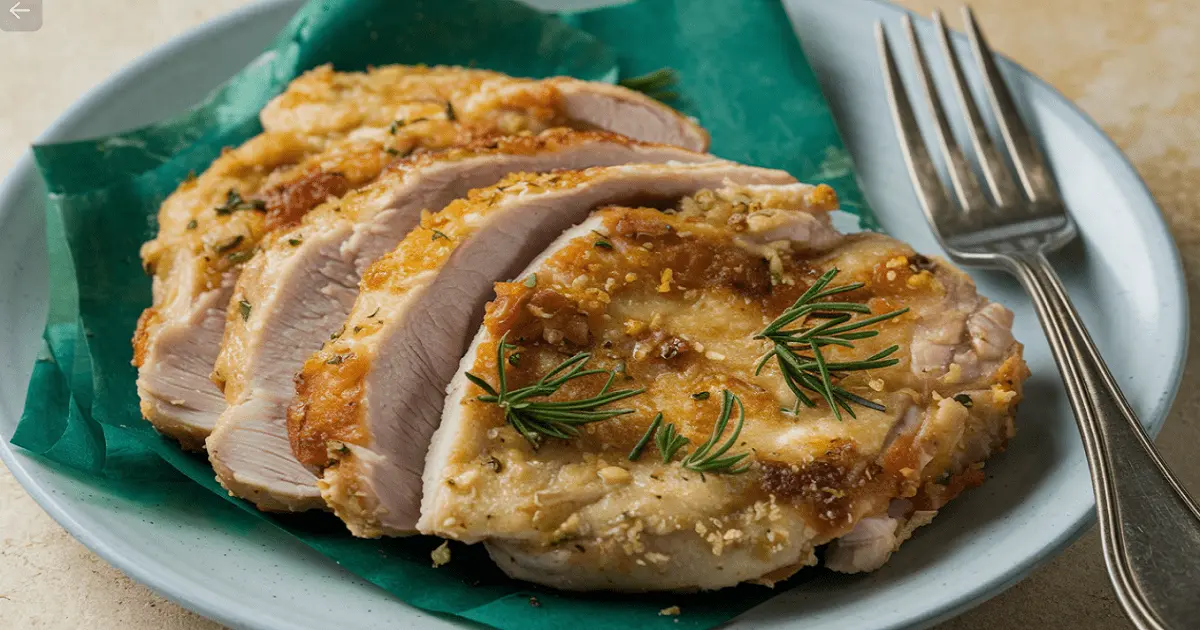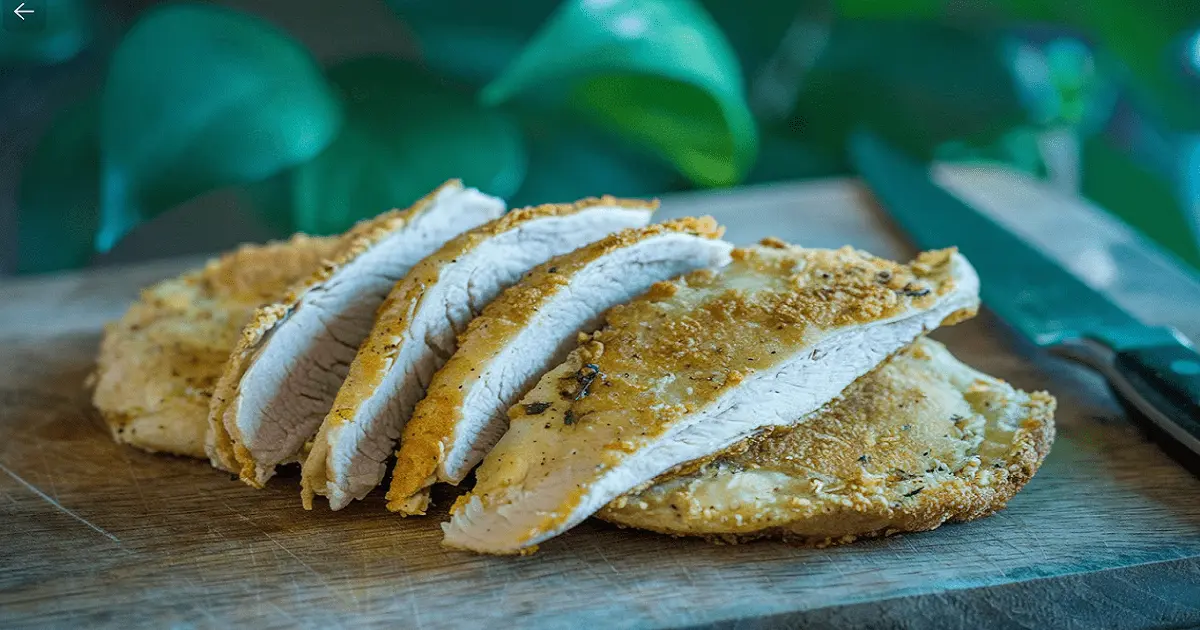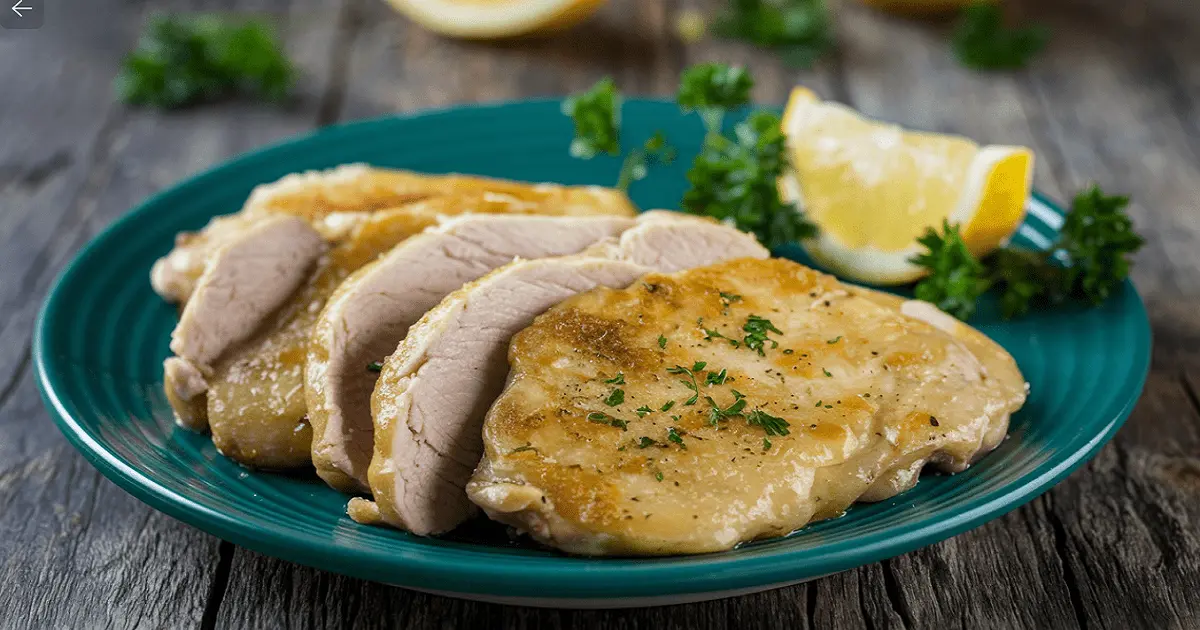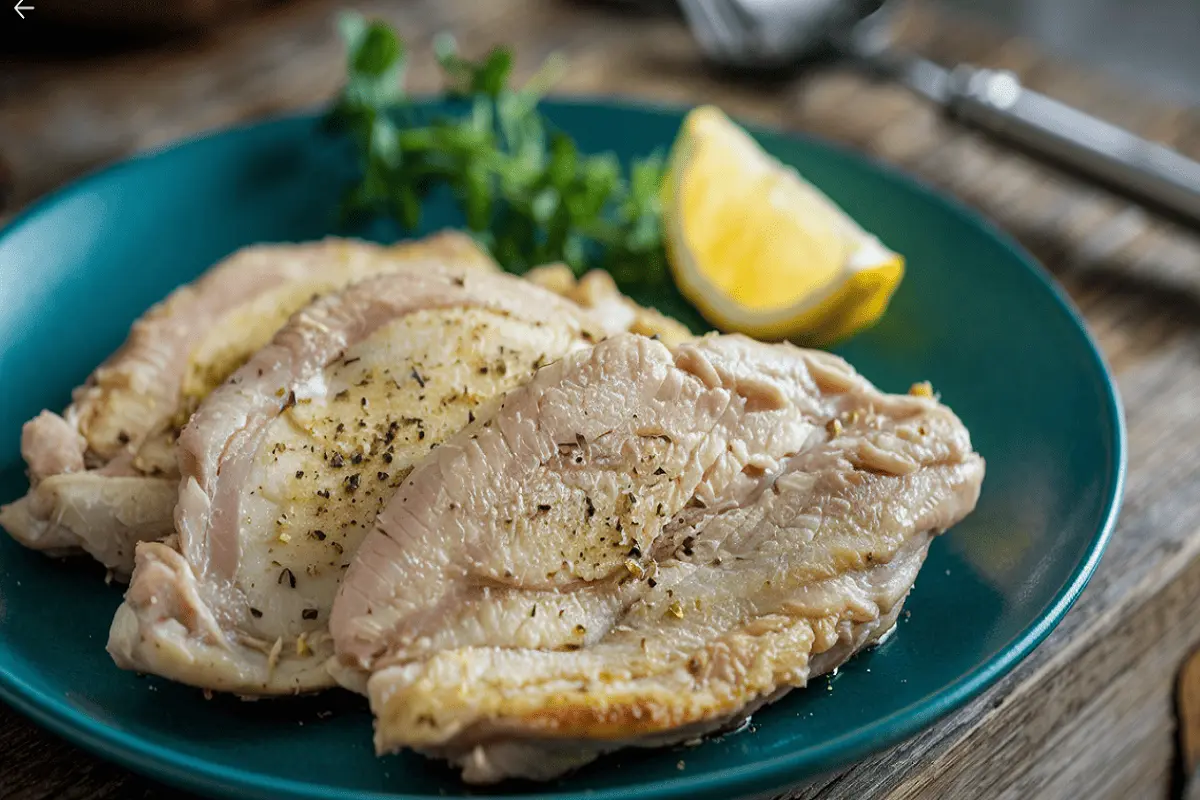Are Chicken Cutlets Supposed to Be Thin?
Chicken cutlets are a popular dish in many kitchens around the world, prized for their versatility, ease of preparation, and ability to fit into a wide variety of recipes. Whether you’re frying, baking, or grilling, chicken cutlets can be a delicious and quick meal. However, one question often arises among cooks: Are chicken cutlets supposed to be thin? This article will explore the reasons behind the preferred thinness of chicken cutlets, how to achieve the perfect thickness, common mistakes to avoid, and some popular recipes that rely on thin cutlets for their success. Additionally, we will address frequently asked questions related to chicken cutlets and their preparation.
What Are Chicken Cutlets?
Chicken cutlets are thin slices of chicken breast that are typically breaded and cooked to create a tender and flavorful dish. The thickness of the cutlet plays a significant role in its texture, cooking time, and overall taste. Many recipes specifically call for thin chicken cutlets to ensure that the chicken cooks evenly and remains juicy.
Preparing chicken cutlets generally involves three main steps: slicing, pounding, and breading.
- Slicing: The chicken breast is sliced horizontally into thinner pieces. This step is essential for attaining the desired thickness. Using a sharp knife, you can create thin slices that will cook quickly and evenly.
- Pounding: After slicing, the cutlets are pounded with a meat mallet to ensure even thickness. This step is crucial for uniform cooking, as it helps break down the fibers in the meat, making it tender and easy to chew.
- Breading: The cutlets are then coated in flour, egg, and breadcrumbs. This not only adds flavor but also helps create a crispy outer layer when fried or baked. For a better understanding of how cutlets have evolved over time, you might find it interesting to explore the history and variations of cutlets on Wikipedia.
For those interested in exploring different ways of cutting chicken, you might find the article on what is thinly sliced chicken breast called helpful. This resource provides additional insights into various slicing techniques and their applications in cooking.
Why Should Chicken Cutlets Be Thin?
The thickness of a chicken cutlet is not just a minor detail; it directly impacts the cooking process and the final dish’s quality. Here’s why thinness is often preferred:
- Even Cooking: Thin cutlets cook more evenly, reducing the risk of overcooking the exterior while the interior remains undercooked. This is particularly important in dishes where the chicken is fried or baked. Even cooking ensures that the chicken remains juicy and tender, without any dry or tough spots.
- Tender Texture: Thinner cutlets tend to be more tender, offering a pleasant bite without being chewy. The pounding process breaks down the meat fibers, contributing to a softer texture that melts in your mouth. This tenderness is a key characteristic of many classic dishes, where the quality of the meat plays a central role.
- Crispier Exterior: For breaded cutlets, thin slices allow for a higher breading-to-chicken ratio, resulting in a crispier exterior. This is especially desirable in dishes like Chicken Schnitzel or Chicken Milanese, where the crunchiness of the coating adds to the overall eating experience.
If you’re concerned about keeping your cutlets moist, especially when cooking thin slices, you might find useful tips in this guide on how to keep thin chicken breast moist. This resource offers practical advice on maintaining juiciness and flavor during cooking.
Achieving the Perfect Thickness
Achieving the perfect thickness for chicken cutlets requires the right tools and techniques. Here’s a detailed guide to help you perfect this essential skill:
- Start with the Right Cut of Chicken: Begin with boneless, skinless chicken breasts. These are the best cuts for making chicken cutlets due to their uniform shape and size. The lack of bones and skin allows for easier slicing and more consistent results.
- Slice the Chicken Breast Horizontally: Use a sharp knife to slice the chicken breast horizontally into two or more thinner pieces. Aim for a thickness of about ¼ inch or less. If you find it difficult to maintain control while slicing, try placing the chicken breast in the freezer for 15-20 minutes before cutting. This slight firming of the meat can make it easier to achieve even slices.
- Pound the Cutlets Evenly: Place the sliced chicken between two pieces of plastic wrap or parchment paper. Use a meat mallet to pound the cutlets gently, working from the center outward. This ensures that the cutlet is even in thickness, which is crucial for uniform cooking. The even thickness helps the chicken cook at the same rate, preventing overcooking in thinner areas.
- Avoid Over-Pounding: While pounding is essential, avoid overdoing it, as this can tear the meat and result in uneven pieces. Over-pounding can also lead to excessively thin areas that may dry out during cooking. Aim for a uniform thickness without compromising the integrity of the meat.
For more detailed guidance on achieving the right thickness, consider reading about the difference between chicken cutlets and thin-sliced chicken breasts. This article provides a thorough comparison, helping you understand the nuances of each preparation method and when to use them in your cooking.

Common Mistakes When Preparing Chicken Cutlets
Even with the best intentions, mistakes can happen when preparing chicken cutlets. Here are some common errors to avoid, ensuring that your cutlets turn out perfectly every time:
- Slicing Too Thick: One of the most common mistakes is slicing the chicken breast too thick. Thick slices can lead to uneven cooking, where the outside may become overcooked while the inside remains underdone. This results in a less desirable texture and flavor.
- Skipping the Pounding Step: Pounding is crucial for achieving uniform thickness. Skipping this step can result in cutlets that cook unevenly, with some parts overcooked and others undercooked. The pounding process also tenderizes the meat, enhancing its palatability.
- Over-Breading: While a crispy coating is desirable, too much breading can overwhelm the chicken and make the cutlet heavy. Ensure that the breading is even and not too thick, allowing the chicken’s natural flavors to shine through without being overshadowed by the coating.
- Using Low-Quality Ingredients: The quality of the chicken and breading ingredients can significantly impact the final dish. Using fresh, high-quality chicken breasts and premium breadcrumbs will enhance the flavor and texture of your cutlets.
- Not Letting the Breading Set: After breading the cutlets, it’s a good idea to let them rest for a few minutes before cooking. This allows the breading to adhere better to the chicken, reducing the risk of it falling off during cooking.
By avoiding these common pitfalls, you can ensure that your chicken cutlets turn out perfectly every time, with a tender interior and a crispy, flavorful exterior.
Popular Recipes That Require Thin Chicken Cutlets
Thin chicken cutlets are a key ingredient in many classic dishes, where their thinness plays a crucial role in achieving the desired texture and flavor. Here are a few recipes where the thinness of the cutlet is essential:
Chicken Milanese
This Italian dish features thin chicken cutlets that are breaded and fried to a golden brown. The cutlet’s thinness guarantees that it cooks quickly and evenly, resulting in a tender and flavorful dish. Typically served with a fresh lemon wedge and a simple salad, Chicken Milanese is a light yet satisfying meal that highlights the importance of using thin cutlets.
Chicken Parmesan
A favorite in Italian-American cuisine, Chicken Parmesan involves layering thin, breaded chicken cutlets with marinara sauce and mozzarella cheese. The cutlets are baked until the cheese is melted and bubbly, creating a rich and satisfying meal. The thinness of the cutlets ensures that they cook through without drying out, even under layers of sauce and cheese.
Chicken Schnitzel

This German dish uses thin chicken cutlets that are breaded and fried until crispy. The thinness of the cutlet is essential for achieving the perfect balance between the crispy exterior and the tender interior. Chicken Schnitzel is often served with a side of potatoes or a fresh salad, making it a versatile dish that can be enjoyed year-round.
Chicken Piccata
In this dish, thin chicken cutlets are sautéed and then simmered in a tangy lemon-caper sauce. The thinness of the cutlets allows them to absorb the flavors of the sauce quickly, resulting in a zesty and refreshing meal. Chicken Piccata is a popular choice for both weeknight dinners and special occasions, thanks to its bold flavors and elegant presentation.
Chicken Marsala
This Italian-American dish features thin chicken cutlets that are cooked in a rich mushroom and Marsala wine sauce. The thinness of the cutlets allows them to cook quickly and evenly, while also absorbing the deep, earthy flavors of the sauce. Chicken Marsala is a comforting and satisfying dish that showcases the importance of using thin cutlets for a perfect result.
These recipes highlight the importance of cutlet thickness in achieving the desired flavor and texture. The thinness of the cutlets plays a crucial role in each dish, ensuring that the chicken cooks evenly and retains its juiciness.
Nutritional Advantages of Thin Chicken Cutlets
Choosing thinner chicken cutlets can offer several nutritional benefits, making them a better option for those seeking lighter, more balanced meals. Here’s why:
- Lower Calorie Content: Thinner cutlets often contain fewer calories per serving because they require less breading and oil for cooking. This makes them a more suitable option for those watching their calorie intake, as they allow you to enjoy flavorful meals without excessive calories.
- Reduced Cooking Time: Because thin cutlets cook faster, they retain more moisture and nutrients. Overcooking can cause nutrient loss, so faster cooking times help preserve the chicken’s nutritional value. This also makes thin cutlets an excellent choice for quick, nutritious meals on busy weeknights.
- Versatility in Low-Fat Cooking Methods: Thin cutlets are ideal for low-fat cooking methods like grilling, baking, or air frying. These methods reduce the need for added fats, helping you create lighter, more balanced meals. Grilling, for example, adds a smoky flavor without the need for oil, while baking can achieve a crispy finish with minimal added fat.
- Portion Control: Thin cutlets naturally lend themselves to better portion control, as their smaller size makes it easier to gauge serving sizes. This can be particularly beneficial for those looking to manage their portion sizes for weight management or dietary reasons.
- Variety in Meal Preparation: Thin cutlets can be used in a wide range of dishes, allowing for greater variety in your meal planning. Whether you’re preparing a simple grilled chicken salad or an elaborate Chicken Marsala, thin cutlets offer the flexibility to create meals that suit your nutritional goals.
Incorporating thin chicken cutlets into your diet can help you enjoy delicious meals while maintaining a balanced and nutritious eating plan. Their versatility and ease of preparation make them an excellent choice for health-conscious cooks.

FAQs About Chicken Cutlets
1. How thin should chicken cutlets be?
The ideal thickness for chicken cutlets is about ¼ inch or less. This thickness ensures that the cutlets cook evenly and quickly, resulting in a tender texture. If the cutlets are too thick, they may require longer cooking times, which can lead to dryness.
2. How thick is a chicken cutlet?
A standard chicken cutlet is typically ¼ inch thick, though this can vary slightly depending on the recipe and personal preference. The key is to maintain a consistent thickness across the cutlet to ensure even cooking. When preparing dishes like Chicken Milanese or Chicken Parmesan, this thickness is particularly important for achieving the best results.
3. Is thin-cut chicken the same as chicken cutlets?
While thin-cut chicken and chicken cutlets are similar, they are not always the same. Thin-cut chicken refers to any chicken breast that has been sliced thinly, while chicken cutlets specifically refer to thin slices that have also been pounded to an even thickness and often breaded before cooking. The process of pounding helps tenderize the meat, making chicken cutlets a preferred choice for certain recipes.
4. Should chicken cutlets be pounded?
Yes, pounding chicken cutlets is essential to achieve an even thickness, which promotes uniform cooking. Pounding also helps tenderize the meat, making the cutlets more tender and flavorful. Skipping this step can result in uneven cooking and a less desirable texture, so it’s an important part of the preparation process.
Conclusion
In conclusion, chicken cutlets are best when they are thin. The thinness allows for even cooking, a tender texture, and a crispy exterior, all of which contribute to the overall quality of the dish. Whether you’re preparing Chicken Milanese, Chicken Parmesan, or Chicken Schnitzel, starting with the right thickness is key to success.
By following the tips and techniques outlined in this article, you can achieve perfect chicken cutlets every time. Remember, the thinness of the cutlet is not just a detail; it’s a critical factor that can make or break your dish. So next time you’re in the kitchen, take the extra step to ensure your cutlets are the right thickness, and enjoy the delicious results!

